How to Get the Look: Victorian Bathroom Tile
In recent years, vintage-style tile has become available, making it possible to restore period bathrooms, create new yet classic bathrooms, or design ones that look as if they’ve always been there.

Drippy glazes in blue, brown and yellow color tiles embossed with a floral design. Photo by Emily Gilbert for Arlington Place Bed and Breakfast
Gorgeous tile, stained glass and deep claw foot tubs — the typical late-Victorian bathroom was luxurious and large. Common features were porcelain hex-tile floors, a wainscot of white subway tile and, of course, the aforementioned iconic tub.
The wainscot would usually be topped by a border of ornate tile with bas-relief garlands, shells or other motifs, and puddling pastel glazes. Today such bathrooms, if any of their original features survive, may be in need of restoration or a plumbing and electrical update.
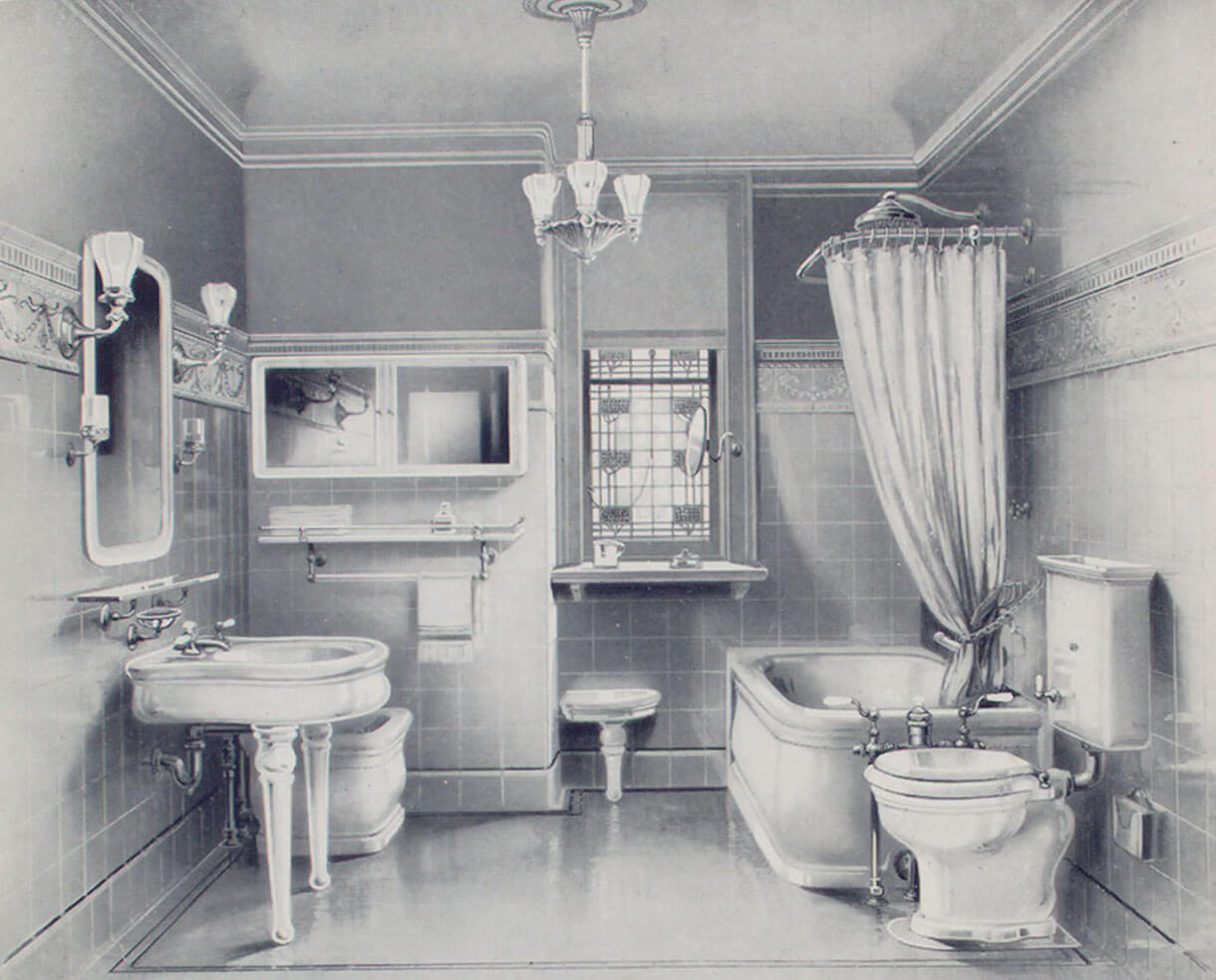
If the original wall tile is in good condition, an easy way to replace water supply and waste pipes is to go through the ceiling below or remove the existing tile on the floor and replace it with new reproduction tile. In recent years, vintage-style tile has become available, making it possible to restore walls and floors, create new yet classic bathrooms, or design ones that look as if they’ve always been there.
Unglazed porcelain hex tile for floors was usually white or pale gray and typically ranged in size from one to two inches. The field tile on the wall could be subway or square tile glazed in white or cream. The frieze of decorative embossed tile above it, usually set at about shoulder height, might be the same white or cream as the wall tile or splotched with pastel glazes in colors such as pink and yellow or aqua. Grout colors were typically shades of white or gray. Apart from visiting a lot of old houses and eyeing real estate listings, a good visual source of examples is the book “Bungalow Bathrooms” by Jane Powell.
In Brooklyn, such tiled bathrooms were common in single-family townhouses from about 1880 to 1920. In the 1890s, the two-family and three-family townhouses that started to appear in Brooklyn had much smaller bathrooms with beadboard walls and wood floors but no tile.
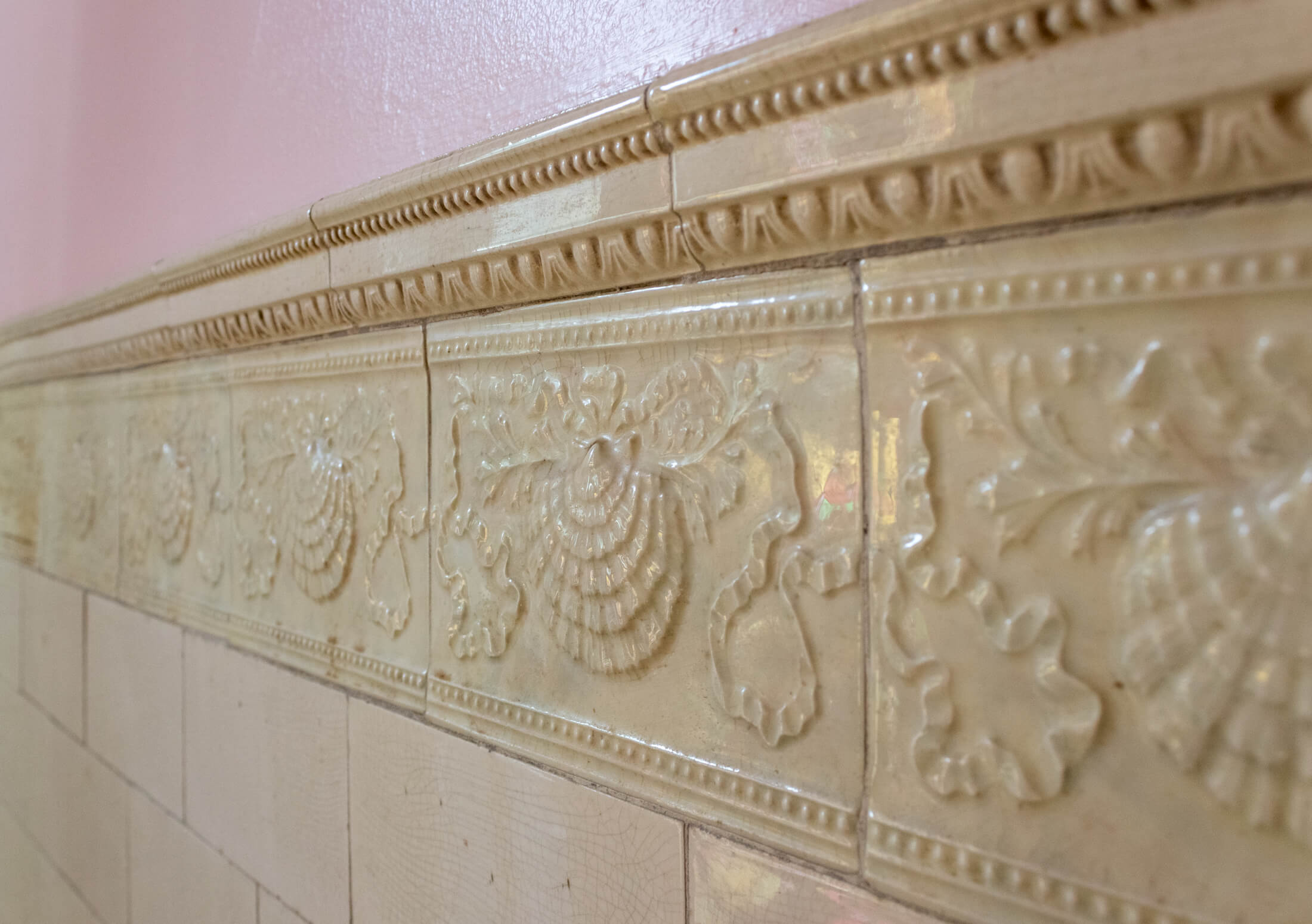
Styles changed in the 1920s with the rise of apartment buildings. Old tile has rectified edges — field tiles are completely flat with square corners, for example — and is installed tightly with narrow grout lines measuring one-sixteenth of an inch or less. Modern tile has eased (rounded) edges and wider grout lines such as one-eighth of an inch. Sources for old-fashioned rectified tiles with narrow spacing include American Restoration Tile in Mabelvale, Ark., Heritage Tile’s Subway Ceramics in Verona, Wisc., and L’Esperance Tile Works in Rock City Falls, N.Y.
American Restoration Tile offers both custom and off the shelf tile, including unglazed tile in hexagon, square and other shapes for the floor. Glazed wall tile in black or white comes in many shapes, and the company also makes hard-to-find trim and edging tile in a wide variety of colors and forms. The tile is rectified and available on backing with spacing of one-sixteenth of an inch or three-thirty-seconds of an inch.
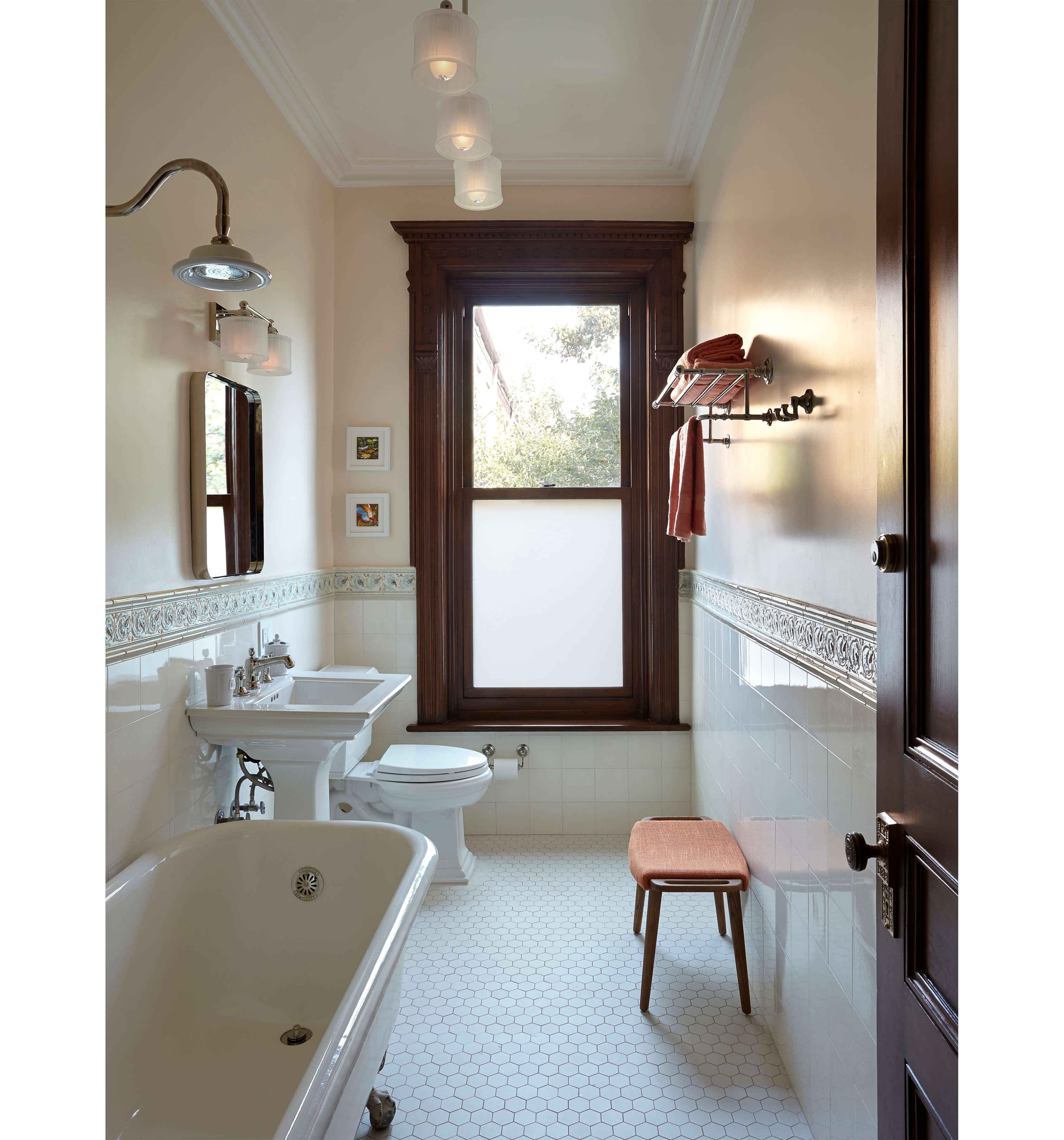
L’Esperance Tile Works features flat field tiles with a machine or hand-cut edge as well as edge tiles of all kinds. Notably, they make decorative liners and frieze tiles with Victorian-style raised designs such as Shell & Ribbon and Cornucopia. They offer both ready made and custom tiles.
Heritage Tile’s Subway Ceramics sells rectified field tiles in a variety of colors and shapes suitable for 19th and 20th century styles and a large selection of edge trims. The tiles are free of backing or spacers, so the installer determines the spacing.
Editor’s note: A version of this story appeared in the Winter 2021 issue of Brownstoner magazine.
Related Stories
- A Brief History of Decorative Painting in Brooklyn and Beyond
- Lighting in the 19th Century Row House
- 10 Tips for Restoring a Wood Frame House in Brooklyn
Sign up for amNY’s COVID-19 newsletter to stay up to date on the latest coronavirus news throughout New York City. Email tips@brownstoner.com with further comments, questions or tips. Follow Brownstoner on Twitter and Instagram, and like us on Facebook.





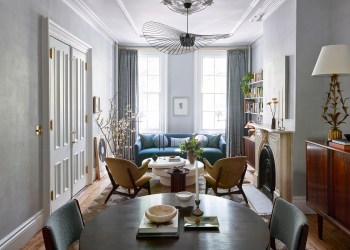
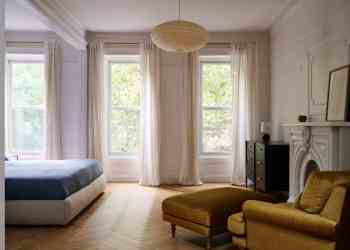


What's Your Take? Leave a Comment